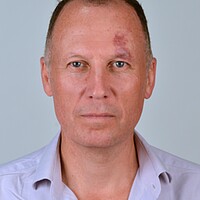With Macedonian route shut, refugees eye dangerous sea crossing to Italy
Loading...
| Idomeni, on the Greece-Macedonia border
More than 12,000 men, women, and children are living in muddy squalor in fields around the frontier crossing of Idomeni between Greece and Macedonia, sleeping in cheap camping tents, washing in standpipes, and queuing for up to four hours for food hand-outs.
The border is not entirely shut – a few hundred refugees, all of them Syrian and Iraqi, are allowed to cross on some days at this border post, where a railway line connects the two countries.
But the numbers are so small that a huge backlog of desperate people is building up – one that aid workers are increasingly worried will try a new, much more dangerous route: through Albania and across the Adriatic to Italy.
“It will be more risky because it is much longer than the Turkey to Greece crossings, and you will also have the involvement of the Albanian mafia,” Marie-Elisabeth Ingres, the head of mission in Greece for Médecins Sans Frontières (Doctors Without Borders), told the Monitor at the Idomeni crossing.
“We don’t know exactly when the new route will start, but I’m sure it will happen.”
A more dangerous path
Last year more than a million refugees and migrants arrived in Europe, the vast majority of them crossing from the Turkish coast to the Aegean islands of Greece, then making their way through Macedonia, Serbia, Hungary, Croatia, and Austria to Germany and Scandinavia.
But the massive flow of humanity has come to an abrupt halt in recent days after Macedonia, Greece’s northern neighbor, imposed draconian limits on the number of refugees it will allow in.
The concern now is that refugees will get so frustrated with the interminable wait to get into Macedonia that they will turn west into Albania. If they can reach the Albanian coast, they will have a shot at crossing the Adriatic to southeastern Italy. (See map here.)
But the crossing is 50 miles – much more dangerous than the short voyages from Turkey to Aegean islands like Lesbos, Kos, and Samos, which are the first stepping stones of the odyssey into Europe.
The new route represents a huge challenge for the Italians, who are already struggling with trying to rescue at sea and accommodate tens of thousands of migrants and refugees who cross the Mediterranean in leaky boats from the coast of lawless Libya. Twenty years ago, Italy had to deal with streams of Albanians crossing the Adriatic by boat, as they fled post-communist chaos in the Balkan country.
The Italian coast guard is stepping up patrols in the Adriatic, particularly along the coast of the southern region of Puglia, where smugglers could land in rocky coves and secluded bays with their human cargo.
The Albanian authorities are bracing for being caught up in Europe’s worst refugee crisis since the dark days of World War II, when millions fled Nazism and Soviet Communism.
“We’re on alert, we’re expecting them,” Mariel Temo, an Albanian customs official in Kapshtice, on the border with Macedonia, told Italy’s La Stampa newspaper this week. “[Truck] drivers have told me that there is an encampment of about 500 refugees just over the border.”
Macedonia’s president has also predicted that it is only a matter of time before traffickers seize on the opportunities presented by the closing of his country’s border with Greece.
“No one wants to stay in Greece, Macedonia, and Serbia,” said Gjorge Ivanov. “The goal of the refugees is Germany. They will find a path there; a dangerous path."
Whack-A-Mole
Closing borders in one part of Europe simply pushes refugees to seek other pathways, in a human version of Whack-A-Mole, humanitarian organizations say.
The only long-term solution is either to stop them coming altogether – highly unlikely given the conflicts raging in Syria and Iraq – or to allow people legal, organized means of seeking safety and asylum.
But in a continent that fears the arrival of at least as many migrants this year as last, there is scare appetite for such a policy.
“Countries are shifting responsibility onto each other. There’s no sense of sharing the load,” says Babar Baloch, a spokesman for the UNHCR, as he watches hundreds more refugees tramp into the Idomeni border camp, carrying tents and blankets and with huge rucksacks on their backs. “Among the refugees there’s a great deal of anguish and frustration. It can’t go on like this.”








